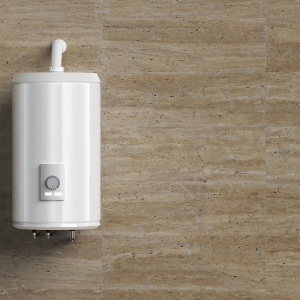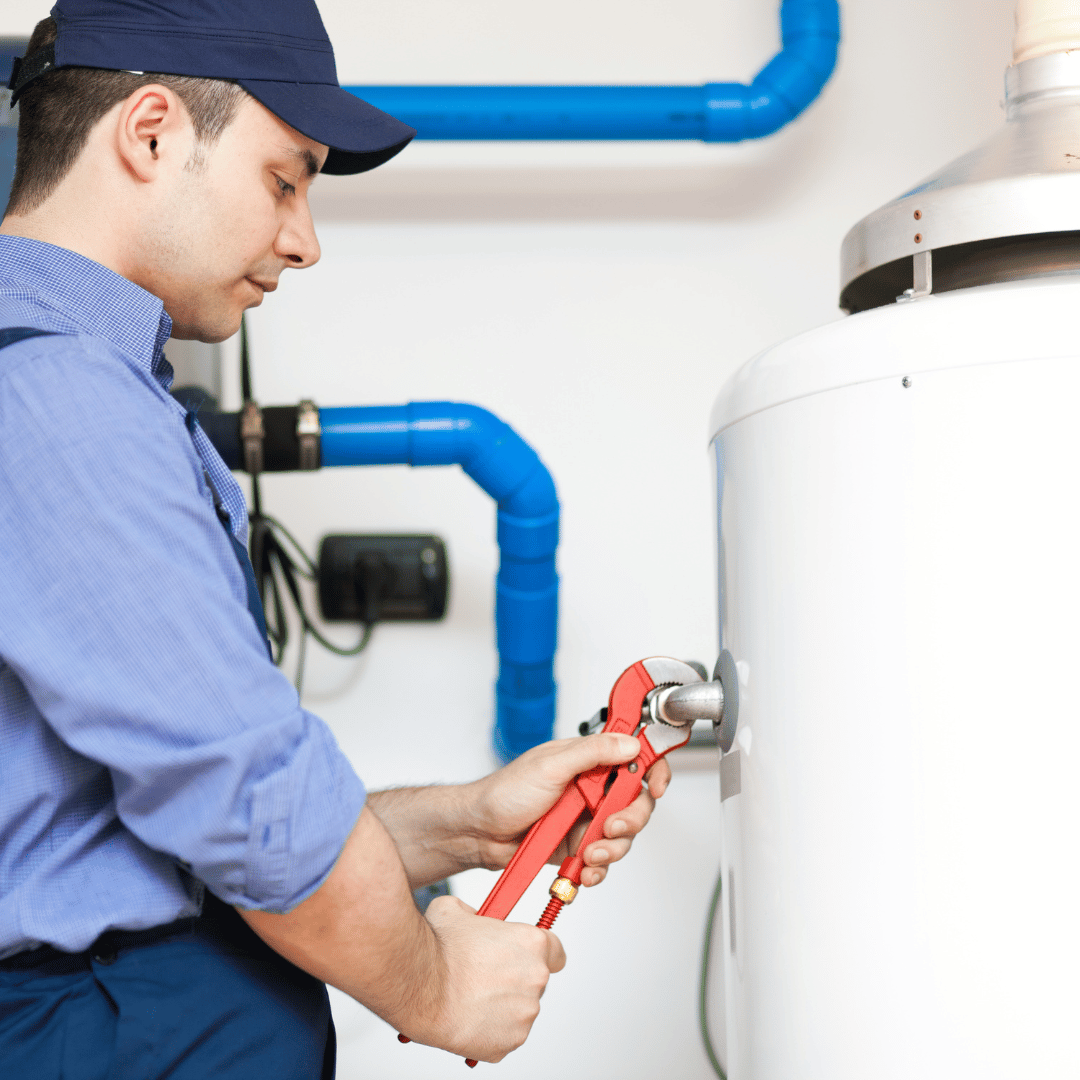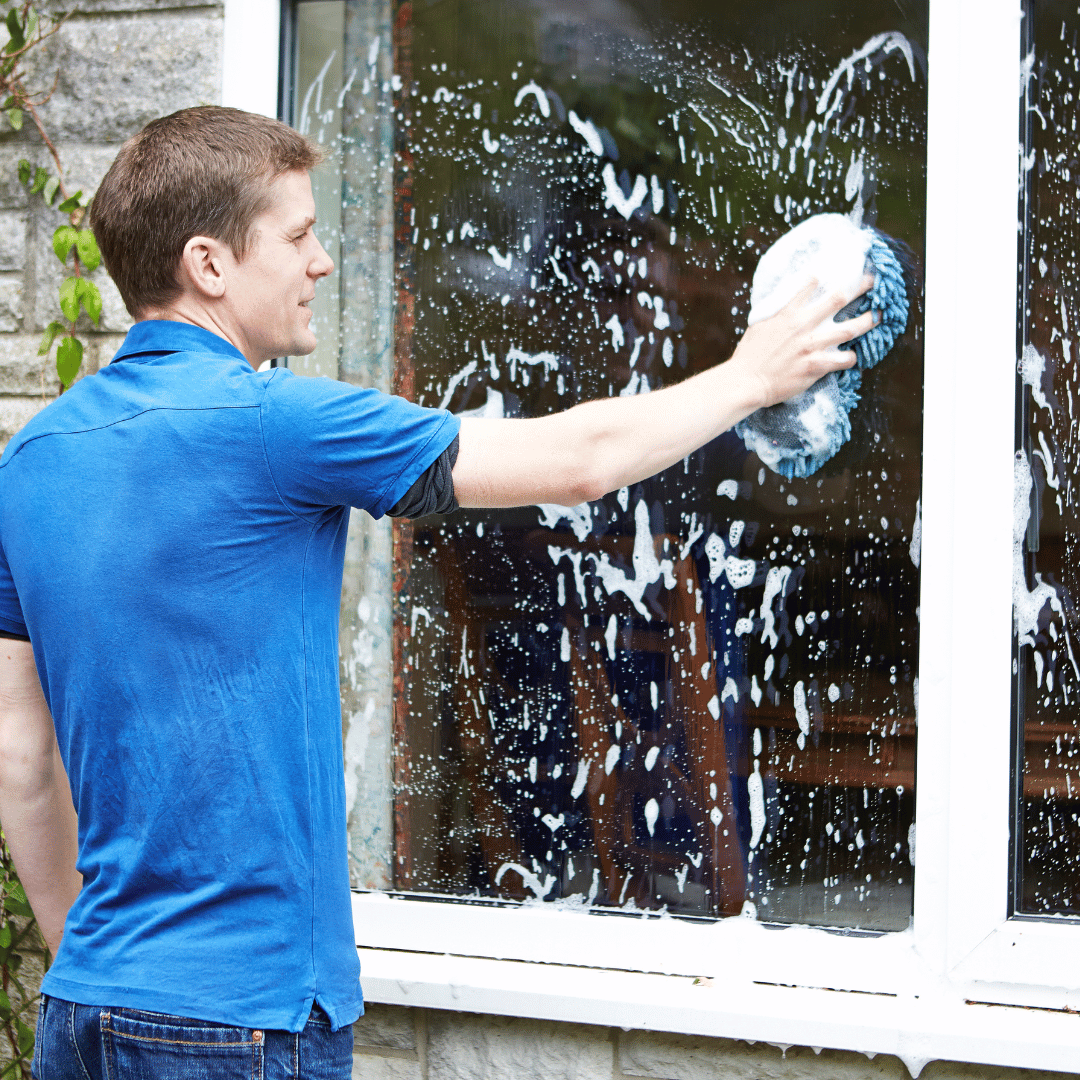
How to Flush Your Water Heater with Vinegar
Maintaining your water heater is a crucial aspect of home care that often gets overlooked. Regular maintenance not only ensures that your water heater operates efficiently but also extends its lifespan, helping you avoid costly repairs down the line. One effective method for keeping your water heater in top shape is flushing it with vinegar. This simple yet powerful preventative home maintenance task helps eliminate sediment buildup and mineral deposits, which can affect performance and efficiency.
In this guide, we’ll explore why flushing your water heater with vinegar is important, how to properly carry out the process, and address common questions to help you get the most out of this maintenance task. Whether you’re tackling interior home maintenance yourself or looking to integrate this step into a broader home care routine, understanding how and why to flush your water heater with vinegar is key to keeping your home’s systems running smoothly.
Why Flushing Your Water Heater is Important
Flushing your water heater is more than just a maintenance task; it’s a critical part of ensuring the longevity and efficiency of your water heating system. Here’s why this preventative home maintenance step is essential:
Prevents Sediment Buildup
Over time, minerals and sediment from your water supply can accumulate at the bottom of your water heater tank. This buildup can insulate the heating element, making it work harder to heat the water and reducing its efficiency. Regularly flushing the tank helps remove this sediment, allowing the heating element to operate more effectively.
Improves Energy Efficiency
A water heater with significant sediment buildup requires more energy to heat water, which can lead to higher utility bills. By flushing the tank and removing these deposits, you can improve the efficiency of your water heater, potentially saving on energy costs.
Extends the Life of Your Water Heater
Sediment buildup can cause increased wear and tear on your water heater, leading to potential damage and a shorter lifespan. Regular maintenance, including flushing the tank, helps minimize this wear and prolongs the life of your water heater.
Enhances Water Quality
Sediment and mineral deposits can affect the taste and clarity of your hot water. Flushing your water heater helps ensure that the water coming out of your taps is clean and free of contaminants, contributing to better water quality throughout your home.
Integrates with Other Home Maintenance Tasks
Flushing your water heater is part of a comprehensive approach to interior home maintenance. It complements other maintenance tasks such as window washing, dryer vent cleaning, and gutter cleaning. By keeping all these systems in check, you ensure a well-maintained and efficient home environment.
Should I Flush My Water Heater with Vinegar?
Flushing your water heater with vinegar is a highly effective method for maintaining your unit and ensuring it operates efficiently. Here’s why you should consider using vinegar for this task:
Benefits of Using Vinegar
- Natural Cleaning Agent: Vinegar is a mild, natural acid that can dissolve mineral deposits and sediment without harsh chemicals. This makes it a safe and environmentally friendly option for cleaning your water heater.
- Prevents Scale Buildup: Hard water can cause scale and sediment to accumulate in your water heater. Vinegar helps break down these deposits, preventing scale buildup and maintaining the efficiency of the heating element.
- Cost-Effective Solution: Vinegar is an inexpensive cleaning agent compared to other commercial descaling products. This makes it a cost-effective choice for regular maintenance.
- Easy to Use: Flushing with vinegar is a straightforward process that doesn’t require specialized tools or skills. It integrates easily into your preventative home maintenance routine.
When to Flush with Vinegar
- Routine Maintenance: It’s recommended to flush your water heater with vinegar at least once a year as part of your regular interior home maintenance schedule.
- Hard Water Areas: If you live in an area with hard water, you might need to perform this task more frequently to combat increased mineral deposits.
Considerations
- Tank Type: Ensure that your water heater is compatible with vinegar cleaning. Most traditional tank-style heaters can be safely cleaned with vinegar, but always consult the manufacturer’s guidelines or a professional if you’re unsure.
- Other Maintenance Tasks: Flushing with vinegar should be part of a broader home maintenance plan that includes tasks such as gutter cleaning, pressure washing, and dryer vent cleaning. Regular upkeep of all these systems contributes to overall home efficiency and prevents costly repairs.
By incorporating vinegar flushing into your home maintenance routine, you can enhance the performance of your water heater and support the overall health of your home’s systems.
How Long to Run Vinegar Through a Water Heater
To effectively flush your water heater with vinegar, it’s crucial to allow the vinegar solution to work for the right amount of time. Here’s how long you should run vinegar through your water heater and why it matters:
Recommended Duration
- 1 to 2 Hours: For optimal results, let the vinegar solution sit in the tank for about 1 to 2 hours. This duration allows the vinegar to thoroughly dissolve sediment and mineral deposits, ensuring a more effective cleaning.
Why Timing Matters
- Effective Sediment Dissolution: The acidity of vinegar works to break down mineral deposits and sediment that have built up over time. Allowing the solution to sit for 1 to 2 hours ensures that the vinegar has sufficient time to dissolve these materials completely.
- Prevents Partial Cleaning: If the vinegar is not given enough time, it may not fully remove all sediment and deposits. This can lead to incomplete cleaning and a continued reduction in the efficiency of your water heater.
Steps to Follow
- Preparation: After turning off the power and draining the tank, add the vinegar to the tank, following the guidelines for the amount based on your tank size.
- Allow to Sit: Close the drain valve and let the vinegar sit in the tank for the recommended 1 to 2 hours. During this time, avoid turning the power back on or using hot water to ensure the solution remains effective.
- Flush and Rinse: After the sitting period, open the drain valve to flush out the vinegar and any loosened sediment. Make sure to fully flush the tank to remove all traces of vinegar before refilling and restarting your water heater.
Integration with Other Maintenance Tasks
Timing for vinegar flushing should be integrated into a broader maintenance schedule. Just as you would plan time for window washing, dryer vent cleaning, and gutter cleaning, ensure you allocate enough time for this important water heater maintenance task. Proper timing and scheduling are key to maintaining the efficiency and longevity of your home systems.
How Much Vinegar Do I Put in My Water Tank to Clean It?
Determining the correct amount of vinegar to use is crucial for effectively flushing your water heater and ensuring a thorough cleaning. Here’s how to measure and use vinegar based on the size of your water tank:
Amount of Vinegar Needed
- For a 40-Gallon Tank: Use approximately 2 to 3 gallons of white vinegar. This amount is generally sufficient to create a strong solution that will effectively dissolve sediment and mineral deposits.
- For a 50-Gallon Tank: Use around 3 to 4 gallons of white vinegar. The larger volume ensures that the vinegar reaches all areas of the tank and provides effective cleaning.
How to Measure and Add Vinegar
- Calculate the Amount: Based on the size of your water heater, measure out the appropriate amount of white vinegar. Using a measuring jug or a container that can handle the volume is helpful.
- Add Vinegar to the Tank:
- After Draining: Once you’ve drained the tank of any remaining water and sediment, close the drain valve.
- Refill with Vinegar Solution: Pour the measured vinegar into the tank through the cold water inlet or a hose, depending on your setup. Ensure that the vinegar fills the tank sufficiently.
- Mix with Water (Optional): For a more diluted solution, you can mix the vinegar with water before adding it to the tank. This is particularly useful if you’re concerned about the strength of the solution.
Importance of Using the Right Amount
- Effective Cleaning: Using the correct amount of vinegar ensures that the solution is strong enough to dissolve mineral deposits and sediment. Insufficient vinegar may not clean effectively, while too much can be wasteful and unnecessary.
- Safety and Efficiency: Properly measuring and adding vinegar integrates with other interior home maintenance tasks. It complements activities such as window washing, dryer vent cleaning, and gutter cleaning, contributing to an overall well-maintained home environment.
By following these guidelines for measuring and using vinegar, you can ensure a thorough and effective cleaning of your water heater.
Step-by-Step Guide to Flushing Sediment Out of a Water Heater
Flushing sediment out of your water heater is a straightforward process, but it requires careful attention to detail. Follow these steps to ensure a thorough and effective cleaning:
Turn Off the Power Supply
- Electric Water Heaters: Switch off the circuit breaker that powers your water heater to prevent electrical hazards while performing maintenance.
- Gas Water Heaters: Set the thermostat to the “off” position to stop the burner from operating.
Turn Off the Water Supply
- Locate the cold water supply valve connected to your water heater and turn it off. This prevents any additional water from entering the tank during the flushing process.
Drain the Tank
- Attach a Hose: Connect a garden hose to the drain valve at the bottom of the tank. Ensure the hose is directed to a drain or bucket to catch the water and sediment.
- Open the Drain Valve: Carefully open the drain valve to let the water flow out of the tank. Allow the water to drain completely, which will also remove accumulated sediment.
Add Vinegar
- Close the Drain Valve: Once the tank is fully drained, close the drain valve to prevent any leakage.
- Add Vinegar Solution: Pour the measured amount of white vinegar into the tank through the cold water inlet or a hose, depending on your setup. Ensure the vinegar fills the tank sufficiently.
Let It Sit
- Allow the vinegar solution to sit in the tank for 1 to 2 hours. This period gives the vinegar enough time to dissolve mineral deposits and sediment. Avoid using hot water during this time to ensure the vinegar remains effective.
Flush the Tank
- Open the Drain Valve: After the vinegar has had time to work, open the drain valve again to flush out the vinegar and loosened sediment. Make sure the tank is thoroughly flushed until the water runs clear.
Refill and Restart
- Close the Drain Valve: Once the tank is completely flushed, close the drain valve securely.
- Turn On the Water Supply: Open the cold water supply valve to refill the tank with fresh water.
- Restore Power: For electric heaters, switch the circuit breaker back on. For gas heaters, turn the thermostat to the desired temperature.
Maintenance Integration
Flushing your water heater should be part of a broader home maintenance routine. Similar to tasks like window washing, dryer vent cleaning, and gutter cleaning, regular water heater maintenance helps ensure all systems in your home function efficiently and effectively.
Will Vinegar Damage a Hot Water Heater?
Using vinegar to clean your water heater is generally safe, but there are a few considerations to keep in mind to ensure it doesn’t cause damage. Here’s what you need to know about the impact of vinegar on your water heater:
Safety of Vinegar Use
- Non-Corrosive Nature: Vinegar is a mild acid that is less corrosive compared to other cleaning agents. When used properly, it effectively dissolves mineral deposits and sediment without damaging the internal components of your water heater.
- Regular Maintenance: Vinegar is a common choice for routine maintenance tasks and is often recommended by manufacturers for cleaning purposes. It is a practical solution for maintaining the efficiency of your water heater.
Precautions to Take
- Manufacturer’s Guidelines: Always check your water heater’s manufacturer guidelines before using vinegar. While vinegar is generally safe, some water heaters may have specific recommendations or restrictions regarding cleaning agents.
- Proper Dilution: Ensure that you use the appropriate amount of vinegar as recommended. Excessive use or undiluted vinegar may potentially cause issues, though this is rare.
- Thorough Flushing: After using vinegar, it’s crucial to thoroughly flush the tank to remove all traces of the acid. Any residual vinegar left in the tank could potentially affect the taste or quality of your water.
Comparison with Other Maintenance Tasks
- Gutter Cleaning and Pressure Washing: Like vinegar cleaning for water heaters, other maintenance tasks such as gutter cleaning and pressure washing require careful attention to avoid damage. Proper techniques and following guidelines are key to effective and safe maintenance.
- Comprehensive Home Care: Incorporating vinegar cleaning into a broader preventative home maintenance routine, which includes tasks like window washing and dryer vent cleaning, helps ensure the overall efficiency and longevity of your home systems.
When to Seek Professional Help
- Complex Issues: If you have concerns about using vinegar or if your water heater requires more intensive maintenance, it’s advisable to consult a professional. Experts can provide guidance and perform tasks safely and effectively.
By following these precautions and integrating vinegar cleaning into your maintenance routine, you can safely and effectively maintain your water heater without risking damage.
Flushing your water heater with vinegar is an effective and practical step in maintaining your home’s water heating system. Regularly performing this task helps remove sediment and mineral deposits, improving the efficiency and lifespan of your water heater. By incorporating vinegar flushing into your routine maintenance, you can prevent costly repairs and ensure your water heater operates smoothly.
Key Takeaways
- Regular Maintenance: Flushing with vinegar should be part of your annual interior home maintenance routine. This simple task, alongside other maintenance activities such as window washing, dryer vent cleaning, and gutter cleaning, ensures your home systems are functioning efficiently.
- Effective Cleaning: Using the right amount of vinegar and allowing it to sit for the recommended time will effectively dissolve sediment and prevent future buildup. This contributes to better performance and energy efficiency of your water heater.
- Safety First: Always follow manufacturer guidelines and take necessary precautions to avoid any potential damage. Proper flushing and adherence to recommended practices help maintain your water heater without compromising its integrity.
If you’re looking for comprehensive home maintenance services, consider reaching out to HomeSmiles. Our team specializes in an extensive 18-point inspection covering both interior and exterior home maintenance. We take care of all those “honey-do” items on your list, ensuring everything from pressure washing to dryer vent cleaning is handled with precision and care. Contact us today to schedule your maintenance and keep your home running smoothly!
- Protecting Your Property: Why the Right Cleaning Method Makes All the Difference
- The #1 Thing That’s Dulling Your Curb Appeal (And How to Fix It)
- How Maintenance Bundles Provide Peace of Mind for Busy Small Business Owners and Facility Managers
- Essential vs. Complete Home Packages: Choosing the Right Preventive Care for Your Property
- How a Simplified Service Model Benefits Both Homeowners and Franchisees Alike


